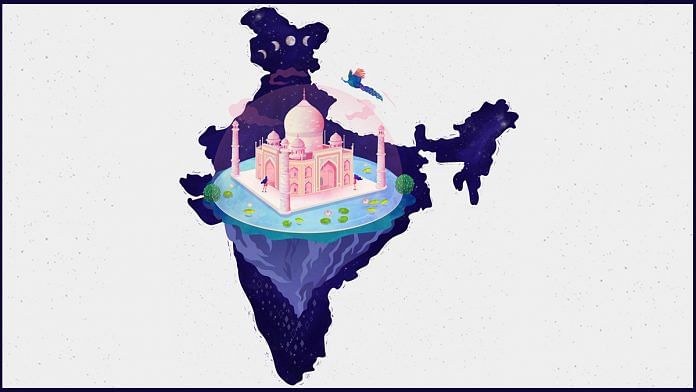Every year on the 15th of August, politicians, historians, and academics become nostalgic and recount stories about India’s freedom movement. If their versions don’t catch your interest, there is always Bollywood’s take on Independence Day and the narratives about India’s progress that come unfiltered through patriotic-themed special shows and programmes. But rarely are designers and artists asked to present their version of India’s seven decades of Independence. An innovative project called ‘Indianama’ began to engage visual designers in 2016 to tell their India story.
As India celebrated 69 years of independence, the project’s premise was simple – 69 artists chosen to create 69 artworks that captured the zeitgeist of every year until that point. The artists visually illustrated milestone events, paid homage to iconic pop-culture moments, and highlighted lesser-known histories.



An initiative by the New Delhi-based advertising and design agency Animal, Indianama began the collaborative attempt to answer a simple but complex question that has plagued designers over the years: What really is Indian design?
Also read: Pingali Venkayya, who designed Tricolour, started work on it 3 decades before Independence
In search of Indian design
It might be easy to pinpoint the Japanese or Swiss design aesthetic, but when it comes to India – well, it gets complicated. Animal founder and Indianama curator Kunel Gaur has said Indianama is a documentation of India with design as its focus. The answer to what Indian design is, became an exploration of what India itself meant.


In the first year of its launch, Indianama saw students, young professionals, design veterans, artists, graphic designers, and even architects respond to its call for artworks. The submissions that came through were sharp, emotional, satirical, and many-a-times, explicitly political. The ability of these artists to articulate past events, headlines, metaphors, and images that had been whirling around in their heads, and turn them into compelling visual compositions underlined the possibility of a new way of looking at history.
Designers can often be heard saying “design is everywhere”. Chronicling and archiving it has now gained urgency among design historians. Recent books like Pukka Indian, Sar – the Essence of India Design, and the exhibition Design: The India Story aim to do precisely that. Instagram handles like @southasia.art and @stars_from_another_sky are trying to generate intelligent virtual conversations about art and film history as well. These projects challenge the existing design curriculum that focuses on teachings from the West, and instead, turn our attention to what we can learn from the objects that surround us every day.

Also read: Gandhi wasn’t the only freedom leader to miss Nehru’s 1947 I-Day speech. There were others too
New independence, new India
Over time, Indianama has grown into a platform that makes room for the mundane, the material, the political, the exotic, and the mythological. Afterthe success of Indianama 2016, there have been two more editions with new artists and new visions. Like 2016, these new editions also culminated in exhibitions held on the 15th of August.
The 2017 edition focused on what India could represent to the outside world and invited artists to take a shot at reimagining a tourism poster for contemporary India.
The 2018 edition pushed the envelope a bit further, forcing artists and designers to descend on street shops. Each artist was paired with the owner of a shop, and asked to rebrand their business and create a whole new identity system.


“It was amazing,” recalls Kunel. “A lot of these shopkeepers who had refused to be a part of it in the first phase, they came to us and they now wanted to get their shops done.”
But it was a long collaborative process – and by no means just a vanity urban renewal project. It was also a way to understand small businesses in India. Many shopkeepers loved the Hindi typography used in some projects. A number of the signages that were originally designed in English had to be changed to Hindi. Designers typically don’t like cluttered graphics, so they came up with simple designs that left out details like phone numbers, menu excerpts, and addresses. But upon realising that those details were key to what the shopkeepers wanted, the artists reworked their designs.
The project had many success stories. Some shopkeepers reported that they had received more customers after the makeover. Pradeep General Stores, located in New Delhi’s Saiyad Ul Ajaib, became a neighbourhood landmark.

The 2019 edition, which is due to be announced on Indianama’s social media channels Thursday, the 15th of August, will be even bolder. Centred on the question “What if”, the edition will shift the role of designers from interpreters to imaginary architects of India’s past.






